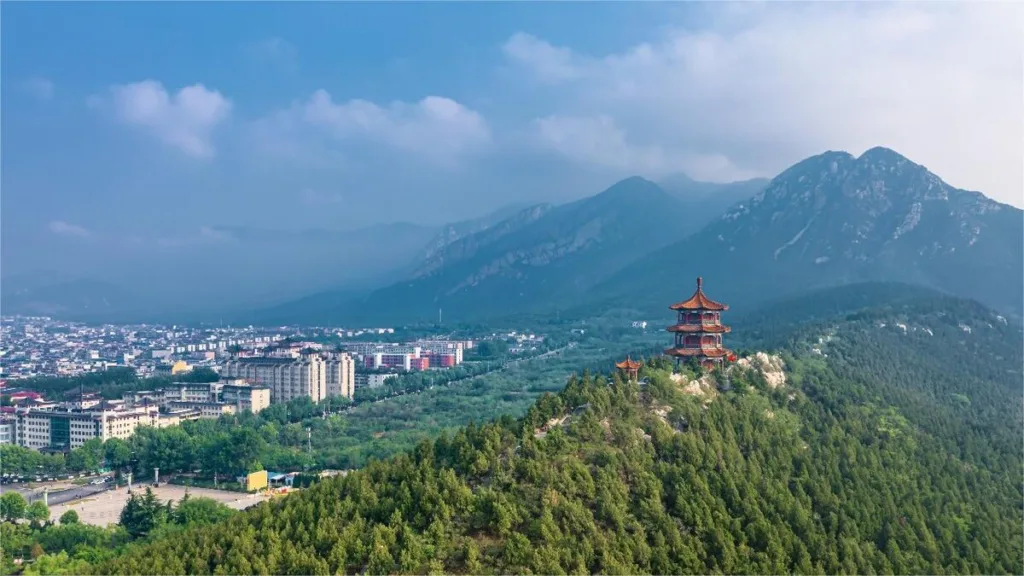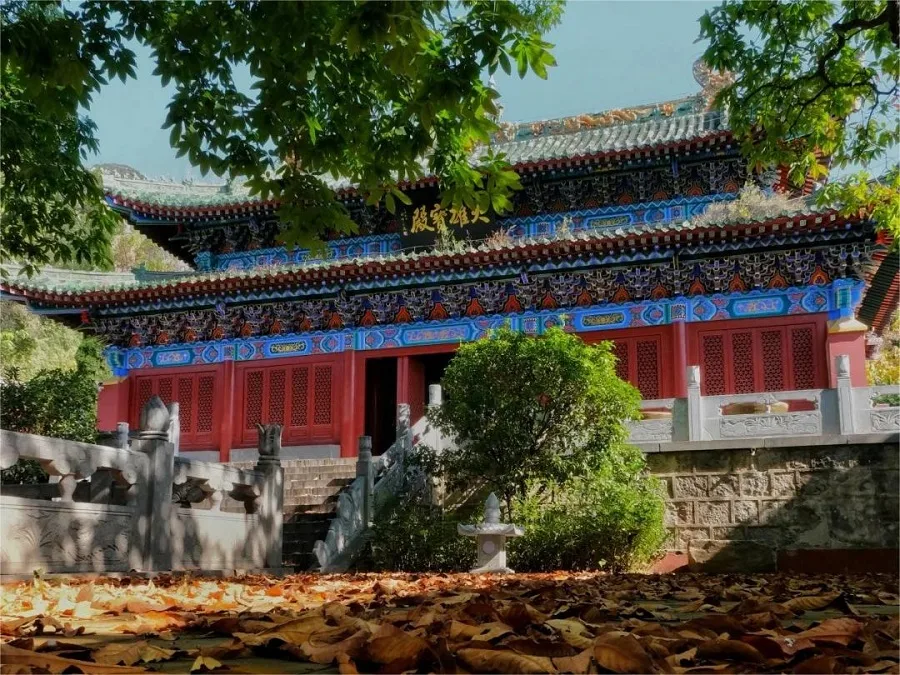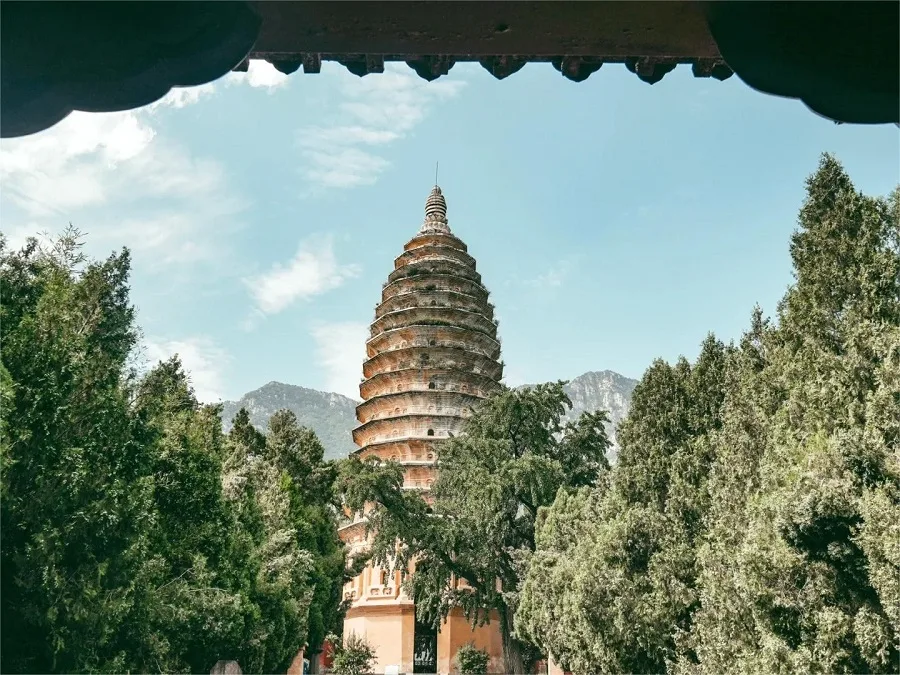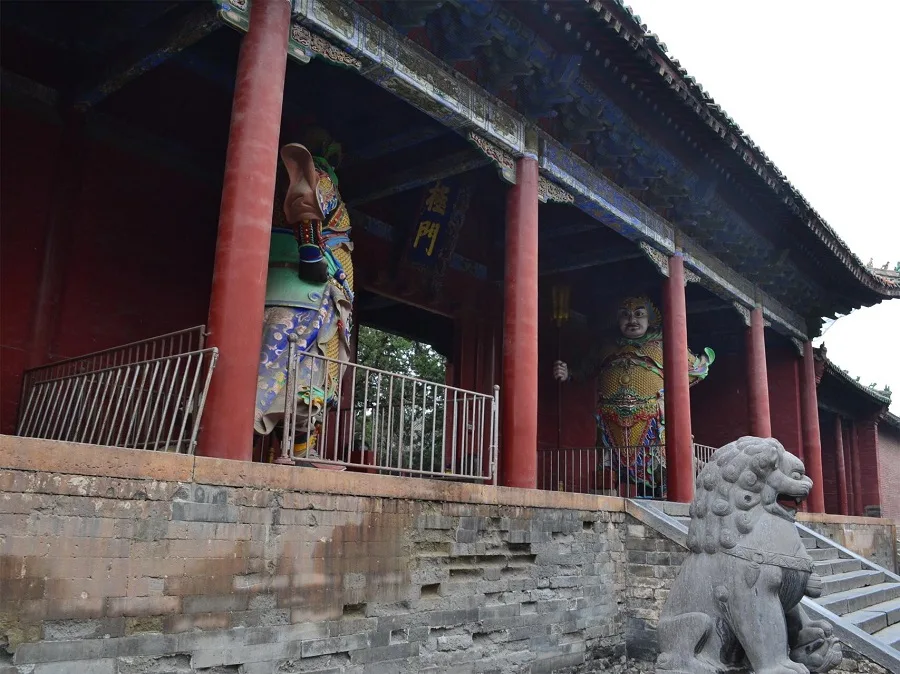Taishi Mountain – Ticket, Opening Hours, Location, and Highlights


Taishi Mountain (太室山), situated north of Dengfeng City in Henan Province, is an eastern constituent part of Mount Song. It comprises 36 peaks, with its highest peak, Junji Peak, towering at an altitude of 1491.73 meters. From the summit of Junji Peak, one can behold the majestic view of Shaoshi Mountain to the west, the graceful Ji Mountain to the south, the rushing Ying River in front, and the meandering Yellow River to the north, presenting an awe-inspiring spectacle.
Legend has it that Tushan, the first wife of King Yu, gave birth to their son Qi at this mountain, leading to the construction of the Qimu Temple (Temple of Qi’s Mother) at the foot of the mountain, hence the name “Taishi” (literally meaning “wife’s residence”).
Typically, July is the hottest month on Taishi Mountain, while January tends to be the coldest. The average annual temperature at the foot of the mountain is 14.5°C, while it is 9.5°C on the mountain, with an average annual wind speed of 5.5m/s, overall presenting a mild climate.
Оглавление
Основная информация
| Предполагаемая продолжительность тура | 1 день |
| Цена билета | Taishi Mountain: 50 RMB Lu Cliff Waterfall: 50 RMB Zhongyue Temple: 30 RMB Songyang Academy: 30 RMB Songyue Pagoda: 40 RMB |
| Часы работы | 7.30 - 17.00 |
| Номер телефона | 0086-0371-62830518 |
Расположение и транспорт
Taishi Mountain is located north of Dengfeng City inZhengzhou, Henan Province, China. It is situated within the Songshan Scenic Area at 146 Zhongyue Avenue. To reach Taishi Mountain, you can depart from Dengfeng Passenger Transport Station and take the “Dengfeng Route 2” bus to the Songyang Academy Station, which is conveniently located near the entrance to Taishi Mountain.
Highlights of Taishi Mountain
Lu Cliff Waterfall

Nestled beneath the Xuanlian Peak of Taishi Mountain, the Lu Cliff Waterfall cascades down with a magnificent drop of 117 meters. Legend has it that during the reign of Emperor Xuanzong of the Tang Dynasty, a man named Lu Hongyi, who was appointed as a Grand Councillor, chose to retreat to this secluded spot instead of pursuing an official career. Here, he gathered scholars and intellectuals, establishing a place of learning known as the “Grass Hut” (Caotang). Following Lu Hongyi’s passing, Emperor Xuanzong renamed the area “Lu Cliff Temple” (Luya Si). Within the northern gorge of Lu Cliff, a spring flows continuously throughout the year. As it tumbles down the cliff, it creates a mesmerizing spectacle resembling a curtain of pearls hanging in the air, accompanied by thunderous roars akin to the fierce growls of tigers and leopards. Under the direct sunlight, the water glistens with radiant hues, creating a dazzling display.
Yongtai Temple

Located on the western foothills of Taishi Mountain, facing the renowned Shaolin Temple and backed by the majestic Wangdu Peak, Yongtai Temple is a significant Buddhist monastery. It is historically notable as the first nunnery built after the introduction of Zen Buddhism to China and is the oldest surviving nunnery in the country. In the second year of the Zhengguang era of the Northern Wei Dynasty (521 AD), Princess Yongtai, the daughter of Emperor Xuanwu, expressed her desire to renounce the world and become a nun on Mount Song. In response, her brother, Emperor Xiaoming, ordered the construction of a nunnery named Minglian Temple next to the Minglian Pagoda at the foot of Zijin Peak. Here, Princess Yongtai devoted herself to the study and propagation of Buddhism, attracting over a hundred women from both noble and common backgrounds to join the order. Initially named Minglian Temple due to its proximity to the Minglian Pagoda, it was later renamed Yongtai Temple in honor of Princess Yongtai.
Songyang Academy

Songyang Academy is renowned as one of the four major ancient academies in China, serving as a prestigious institution of higher learning. Its origins date back to the 8th year of the Taihe reign of the Northern Wei Dynasty (484 AD) when it was established as Songyang Monastery, initially serving as a Buddhist center with hundreds of monks. During the Sui Dynasty (605–618 AD), it was renamed Songyang Taoist Temple, transitioning into a Taoist place of worship. Emperor Gaozong of the Tang Dynasty transformed it into a palace named “Fengtian Palace” during his visit to Mount Song in the first year of the Hongdao reign (683 AD). In the Later Zhou Dynasty (951–960 AD), it was reestablished as Taiyi Academy. Finally, in the second year of the Jingyou reign of the Song Dynasty (1035 AD), it was renamed Songyang Academy, becoming an educational institution where renowned scholars lectured on classical texts throughout successive dynasties.
Songyue Pagoda and Songyue Monastery

Located within the precincts of Songyue Monastery, Songyue Pagoda is a distinctive multi-eaved, rotating pagoda. Constructed in the second year of the Yongping reign of the Northern Wei Dynasty, it originally served as a palace for Emperor Xiaowen. Later, it was converted into a Buddhist monastery and renamed Songyue Monastery during the reign of Emperor Xiaoming of the Northern Wei Dynasty. The pagoda is the earliest surviving brick pagoda in China and features a unique twelve-sided design, making it a rare specimen among ancient Chinese pagodas. With a height of 37 meters and 15 stories, it exhibits the early form of a multi-eaved pagoda. Today, it is included in the “Historic Monuments of Mount Song, the Temple of the Central Sacred Mountain, and the Site of the Ancient Capital Luoyang” as a UNESCO World Cultural Heritage Site.
Zhongyue Temple

Zhongyue Temple, dating back to the Qin Dynasty (221–207 BC), serves as a sacred site for worshipping the gods of Taishi Mountain, covering an area of nearly 110,000 square meters. Nestled against the Huanggai Peak and facing the Yuanan Mountain, with the Wangchao Ridge to the west and the Muzigang to the east, Zhongyue Temple is surrounded by a majestic array of mountains, presenting a grand and meticulously arranged layout. Originally known as Taishi Temple, it largely retains the layout and structures from the Qing Dynasty restoration. The temple complex comprises 39 buildings and nearly 400 rooms, including halls, palaces, pavilions, and towers. The architecture and stone inscriptions within Zhongyue Temple provide valuable material for studying Wei Dynasty calligraphy, Taoist history, and the religious history of Zhongyue Temple.
Vlog about Taishi Mountain
Пейзажи Хэнани, Достопримечательности Чжэнчжоу